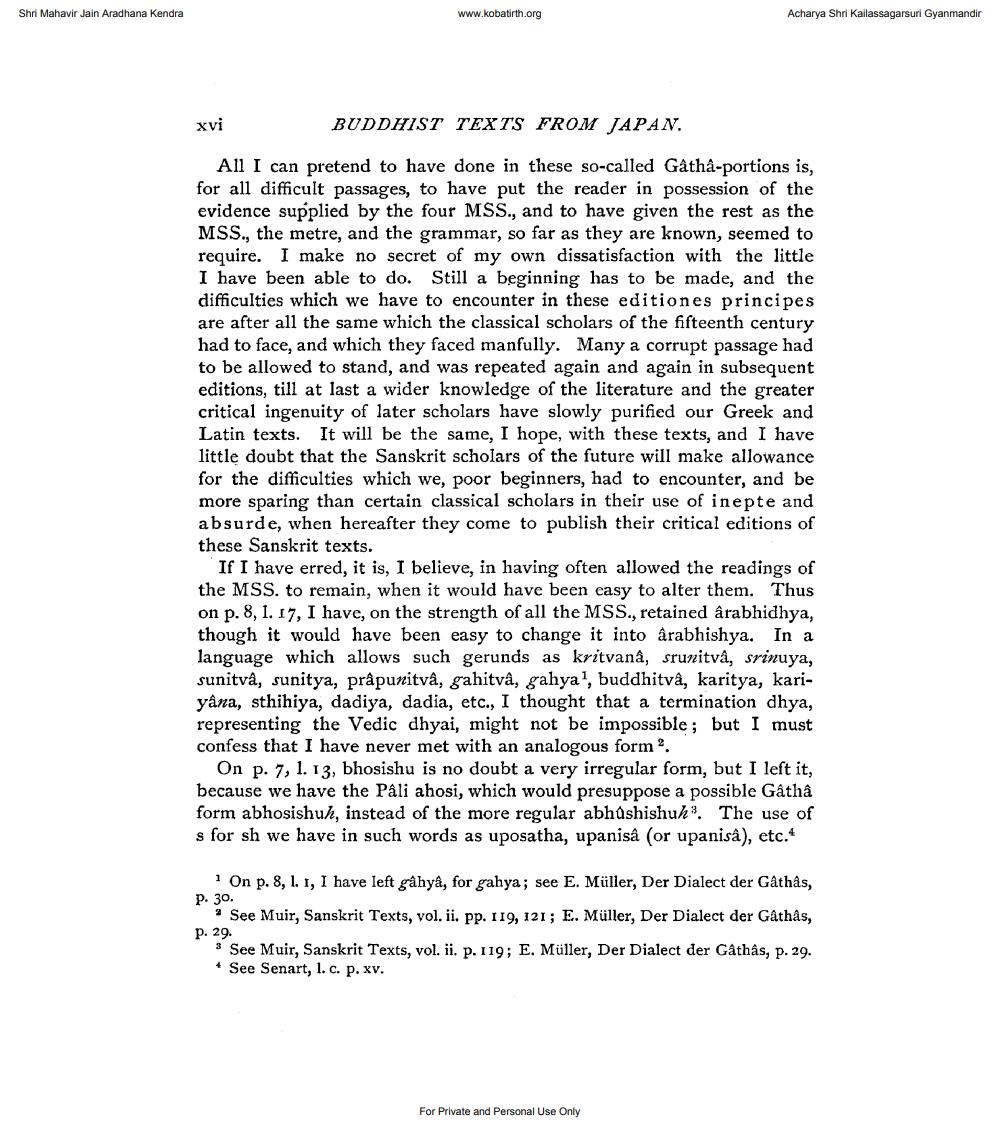________________
Shri Mahavir Jain Aradhana Kendra
www.kobatirth.org
Acharya Shri Kailassagarsuri Gyanmandir
xvi
BUDDHIST TEXTS FROM JAPAN.
All I can pretend to have done in these so-called Gatha-portions is, for all difficult passages, to have put the reader in possession of the evidence supplied by the four MSS., and to have given the rest as the MSS., the metre, and the grammar, so far as they are known, seemed to require. I make no secret of my own dissatisfaction with the little I have been able to do. Still a beginning has to be made, and the difficulties which we have to encounter in these editiones principes are after all the same which the classical scholars of the fifteenth century had to face, and which they faced manfully. Many a corrupt passage had to be allowed to stand, and was repeated again and again in subsequent editions, till at last a wider knowledge of the literature and the greater critical ingenuity of later scholars have slowly purified our Greek and Latin texts. It will be the same, I hope, with these texts, and I have little doubt that the Sanskrit scholars of the future will make allowance for the difficulties which we, poor beginners, had to encounter, and be more sparing than certain classical scholars in their use of inepte and absurde, when hereafter they come to publish their critical editions of these Sanskrit texts.
If I have erred, it is, I believe, in having often allowed the readings of the MSS. to remain, when it would have been easy to alter them. Thus on p. 8, 1. 17, I have, on the strength of all the MSS., retained arabhidhya, though it would have been easy to change it into árabhishya. In a language which allows such gerunds as kritvanå, srunitvå, srinuya, sunitva, sunitya, prâpunitva, gahitva, gahya", buddhitva, karitya, kariyana, sthihiya, dadiya, dadia, etc., I thought that a termination dhya, representing the Vedic dhyai, might not be impossible; but I must confess that I have never met with an analogous form.
On p. 7, 1. 13, bhosishu is no doubt a very irregular form, but I left it, because we have the Pâli ahosi, which would presuppose a possible Gathả form abhosishuh, instead of the more regular abhushishuh. The use of s for sh we have in such words as uposatha, upanisâ (or upanis), etc.
On p. 8, 1. 1, I have left gâhyâ, for gahya; see E. Müller, Der Dialect der Gåthås, P. 30.
* See Muir, Sanskrit Texts, vol. ii. pp. 119, 121; E. Müller, Der Dialect der Gathas, P. 29.
* See Muir, Sanskrit Texts, vol. ii. p. 119; E. Müller, Der Dialect der Gåthâs, p. 29. + See Senart, 1. c. p. xv.
For Private and Personal Use Only




